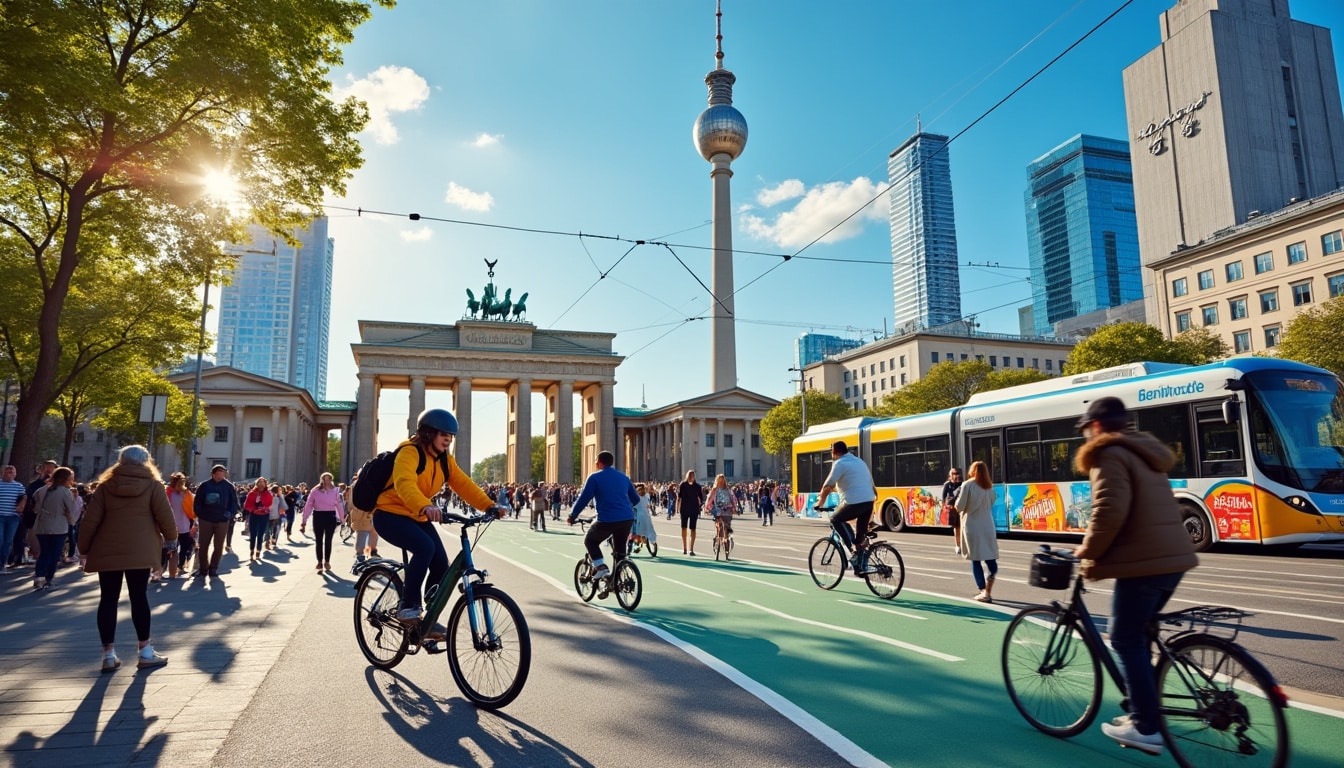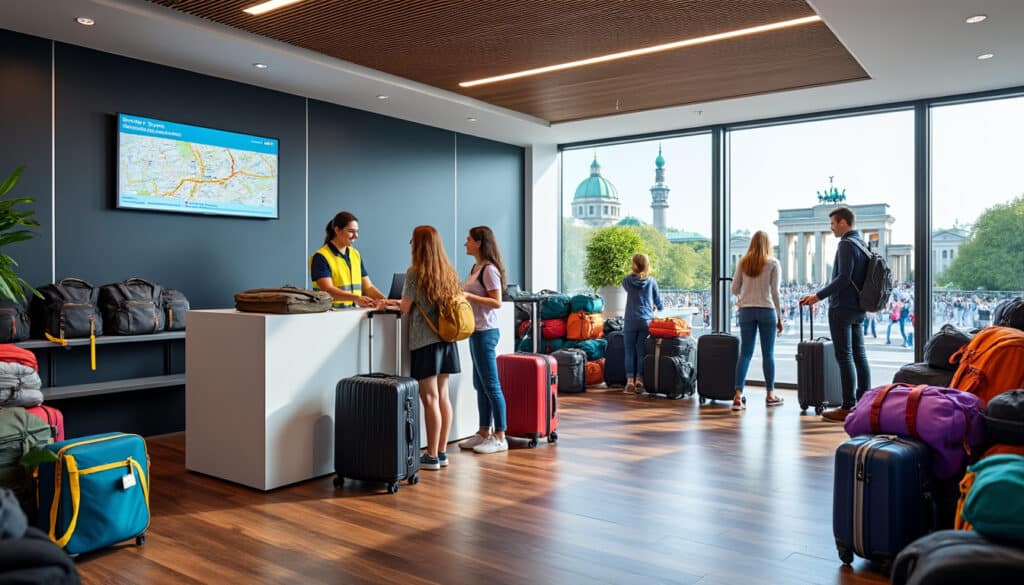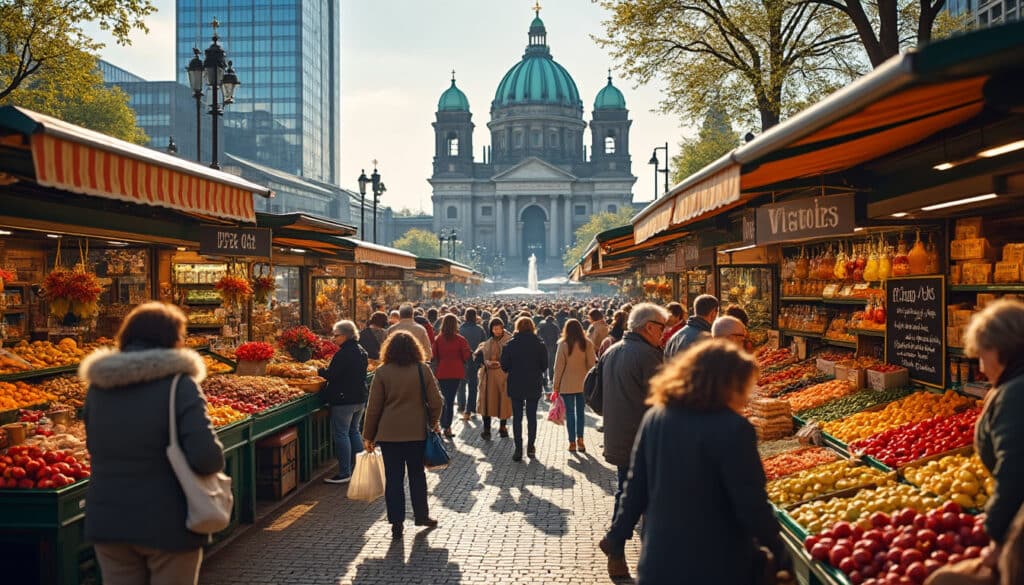Berlin is a city renowned for its vibrant culture, cutting-edge technology, and forward-thinking urban planning. This cosmopolitan hub is not just a cultural heart of Germany, but it’s also a pioneer in sustainable urban mobility. With a sophisticated transportation network that includes everything from bicycles to buses, Berlin demonstrates the possibilities of effective city mobility. The city’s transportation infrastructure is not only about efficiency but also about creating a balance between technology, tradition, and sustainability. Whether you’re a local or a visitor, understanding the nuances of getting around Berlin can enhance your experience significantly.
The Backbone of Berlin’s Mobility: Public Transportation
The public transportation system in Berlin is the lifeline of the city, allowing its 3.6 million inhabitants to navigate effortlessly across its extensive urban landscape. The vast network of buses, trams, the U-Bahn (subway), and the S-Bahn (urban rail) weaves through the city like a well-oiled machine. The Berliner Verkehrsbetriebe (BVG), Berlin’s main public transport company, ensures that public transportation in Berlin is reliable, efficient, and accessible. The integration of these various modes provides seamless transit experiences that highlight the city’s commitment to efficient urban planning.
One of the most striking features of Berlin’s public transport system is its convenience and ease of use. For example, the fahrCard ticket system enables passengers to commute across multiple transit options without any hassle. The city’s strategy of integration ensures that the system is accessible to everyone, from students to senior citizens. Innovations like the Deutschland Ticket offer a comprehensive solution with affordable options, allowing commuters to use public transport across the nation for a nominal 49 euros per month.
| Mode of Transport | Examples | Key Features | Iconic Routes |
|---|---|---|---|
| Metro (U-Bahn) | Lines U1-U9 | Rapid transit, underground | U2 Alexanderplatz to Zoologischer Garten 🐘 |
| Urban Rail (S-Bahn) | Lines S1-S85 | Connects suburbs to city | S7 to Potsdam 🏰 |
| Trams | M1, M2, M5 | Surface rail, comprehensive coverage | M1 to Pankow |
| Buses | 100, 200, TXL | Extensive network, night services | TXL to Tegel Airport 🛬 |
The BVG also provides night buses and special services for festivals and events, ensuring the city remains pulsating through the night, much to the delight of Berlin’s famed nightlife enthusiasts. These options empower even the most intrepid explorers to delve into the city’s dynamic cultural tapestry without the stress of figuring out travel logistics.
Moreover, Berlin’s public transport network is also designed to be inclusive and accessible, featuring low-floor buses, elevators in stations, and clear signage for those with mobility challenges. The environmentally-friendly aspect of this network underscores Berlin’s dedication to sustainability. From energy-efficient trains to initiatives that prioritize greener transportation modes, the city exemplifies modern urban mobility that meets the demands of today while ensuring long-term ecological balance. Discover more about Berlin’s public transport system.
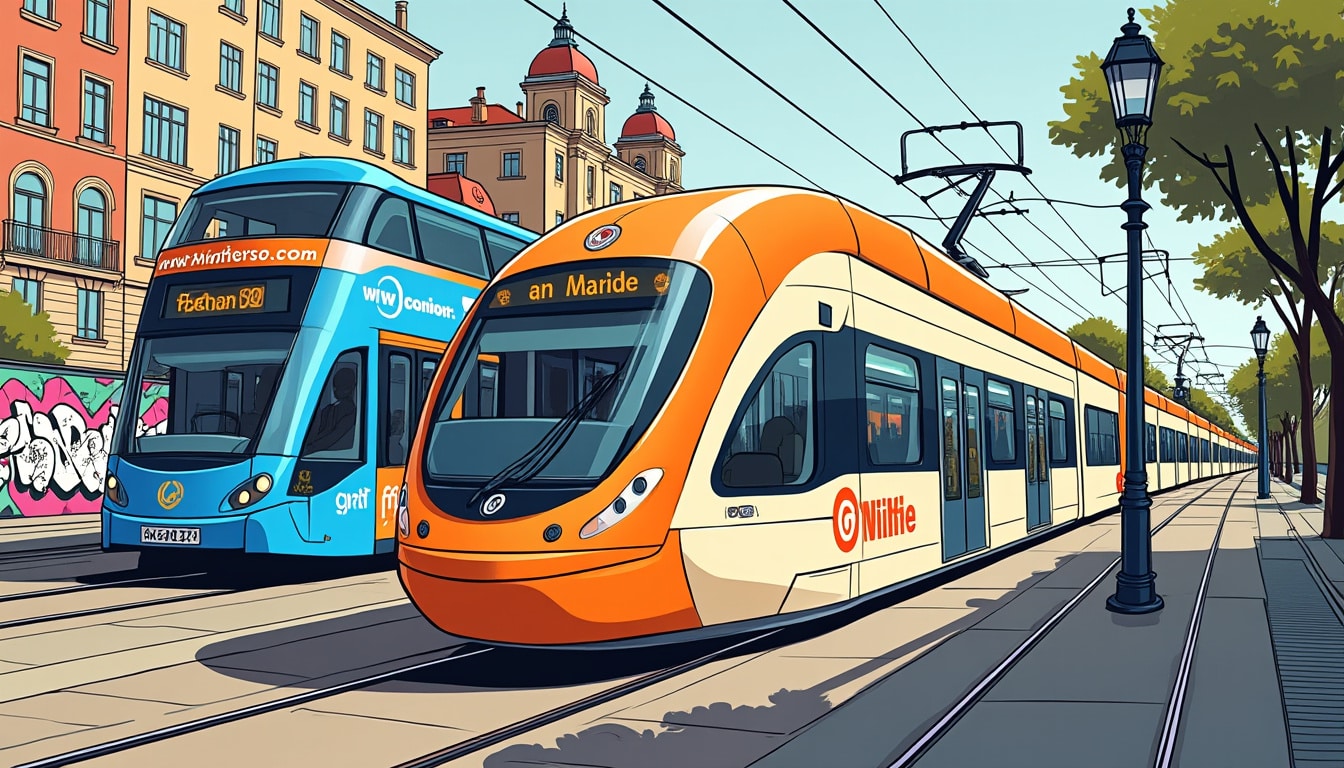
Navigating the City by Bicycle: Berlin’s Cycling Culture
Berlin’s cycling culture is an integral part of its identity, echoing its commitment to healthy living and environmental consciousness. The city’s extensive network of bike lanes and paths makes cycling in Berlin both practical and pleasant. In fact, the city has over 1,000 kilometers of cycling infrastructure that facilitates a significant portion of daily commutes. This commitment to cycling is largely driven by the FahrRat, Berlin’s cycling advisory board which plays a pivotal role in shaping the city’s cycling strategy.
Key Elements of Berlin’s Cycling Infrastructure
- 🚲 Dedicated bike paths: Including 662 km of bike paths and 174 km of bike lanes.
- 🏞️ Exemplary roads: Some roads have designated bike lanes, enhancing safety and efficiency.
- 🅿️ Park and Ride stations: Strategic bike parking options encourage biking to transit hubs.
- 💼 Smart bike-sharing: Services like Lime, Circ, and CleverShuttle provide flexible commuting options.
The city’s meticulously planned cycling infrastructure is designed to ensure safety and accessibility, thereby encouraging more residents to opt for this eco-friendly mode of transport. Educational programs and community engagement initiatives also play a significant role in promoting cycling culture, from events that raise awareness to traffic education for children and motorists alike. These efforts are mirrored by other global cities, but Berlin seems to have perfected the mix of modern infrastructure and cultural tradition.
One of the key success stories of Berlin’s cycling initiatives is the integration between cycling and public transport. The ability to easily transition from a bicycle to a tram or a bus is facilitated by the availability of ample bike parking at transit stations and dedicated spaces on certain modes of transport. This synergy makes multimodal commuting seamless, effective, and attractive.
The former divisions of the city now serve as unique pathways that bring a historical touch to modern mobility. Riding through different boroughs offers insight into both Berlin’s turbulent history and its vibrant recovery and development. More about Berlin’s unique demographics and geography can be found here.
Driving in Berlin: Challenges and Considerations
While public transport and cycling are often preferred modes of transportation in Berlin, driving a car presents its own set of challenges. With stringent policies and regulations, the city actively discourages excessive car use to promote cleaner, more efficient alternatives. The high costs associated with car ownership, including hefty vehicle taxes and parking fees, aim to mitigate car usage and reduce congestion.
Berlin maintains controlled parking zones, where residents must obtain permits to park, and free parking is virtually nonexistent. This policy is part of the city’s broader initiative to reduce car dependence and lower emissions. The Umweltbundesamt, Germany’s Federal Environment Agency, supports these eco-friendly initiatives by monitoring and advocating for sustainability in urban planning.
Key Challenges of Car Ownership in Berlin
- 💰 High ownership costs: Taxes and fees make owning a car more expensive.
- 🅿️ Limited parking options: Controlled parking zones and permits required.
- 🌿 Environmental restrictions: The Environmental Zone limits high-emission vehicles.
- 🔄 Shared mobility services: Options like DriveNow and FreeNow offer convenient car-sharing alternatives.
The introduction of the Environmental Zone is another crucial step in Berlin’s environmental strategy. This zone restricts vehicle entry to cars that meet low emission standards, thereby promoting the adoption of cleaner technologies. For tourists and residents alike, understanding Berlin’s legal requirements is essential to navigating the city responsibly.
In addition to car ownership, Berlin also boasts a robust network of car-sharing services which provide a flexible mobility solution. Companies like DriveNow and FreeNow are at the forefront of providing on-demand vehicle access, an attractive option for those who occasionally need a car without the commitments of ownership.
Furthermore, for those unfamiliar with navigating a foreign city’s driving norms, it is often more reassuring to opt for professional services like taxis. Understanding Berlin’s taxi and cab services can offer peace of mind to travelers seeking reliable and safe options.
Embracing Tech and Innovation in Berlin’s Mobility Solutions
As Berlin continues to evolve, so does its embrace of technology and innovation in transportation. The city’s efforts to integrate tech solutions have been pivotal in creating a smart, efficient urban mobility landscape. Apps like GoBerlin ensure that residents and tourists can plan and pay for their journeys seamlessly. This digital integration is a vital aspect of Berlin’s mobility strategy, prioritizing user convenience and service efficiency.
The role of digital solutions extends to real-time data collection and analysis, facilitating better decision-making and planning by city authorities. This effort is aided by the city’s comprehensive Transport and Development Plan, which charts a forward-looking mobility framework for the city. For a closer look at how technology is shaping urban mobility in Berlin, visit here.
Innovative Solutions Leading the Way
- 📱 GoBerlin App: Centralized platform for journey planning and payments.
- 🚗 Smart ride services: FlixBus and other shared options for intercity travel.
- 🔄 Real-time data analytics: Ongoing monitoring for traffic and environmental conditions.
- 🛴 Rental e-scooters: Lime and Circ offer convenient micro-mobility.
The concept of micro-mobility has also taken root in Berlin with the advent of rental e-scooters from brands like Lime and Circ, providing versatile last-mile solutions. These scooters are particularly popular among young professionals and tourists for quick and convenient inner-city mobility.
Furthermore, Berlin has become a testing ground for future transport innovations. Autonomous vehicles and electric scooters are just the beginning of a suite of technologies that promise to revolutionize the urban mobility landscape. The city’s support for such developments signifies its commitment to being at the forefront of sustainable and technologically advanced urban planning.
How Policies Shape Berlin’s Urban Transport Landscape
Policies form the bedrock of Berlin’s transport sector, designed with the aim of encouraging sustainable practices while fostering an efficient transport infrastructure. The synthesis of local and federal regulations has borne fruit in reducing car dominance and elevating the role of public transport and cycling.
The local government has tailored policies focused on making non-car transport modes more appealing. These include subsidies for public transportation infrastructure, promotions on biking, and comprehensive environmental protection measures. An informed citizenry and proactive leadership have been key components in advancing Berlin’s urban mobility goals.
Berlin’s Strategic Policies for Mobility
- 🌍 Environmental measures: Encouragement of low-emission vehicles and reduction of noise pollution.
- 🚦 Mobility promotion: Support for walking, cycling, and public transit.
- 🏗️ Infrastructure investment: Expanding cycling lanes and public transport routes.
- 📊 Data-driven decision making: Utilizing surveys and analytics for policy formulation.
In crafting these policies, the city leverages comprehensive data collection and analytics. Periodic surveys help gauge public satisfaction and collect valuable feedback that informs future developments. Such dynamic policy-making ensures that Berlin stays aligned with its long-term vision of sustainable urban mobility.
To learn more about safety and policies in Berlin’s transport, visit here. The city’s approach serves as a model for other metropolitan areas aiming to balance mobility needs with sustainability demands, marking Berlin as a leader in modern urban planning.
FAQs
- What transport tickets can be used on all modes of public transport in Berlin?
The fahrCard and Deutschland Ticket cover all public transportation modes, including U-Bahn, S-Bahn, buses, trams, and ferries. - What’s the best way to find parking in Berlin?
Parking in Berlin requires a permit in controlled zones, so it’s best to use public transport or car-sharing services for convenience. - How can I ensure a safe ride in Berlin?
Using well-lit, populated areas for cycling and opting for registered taxis and reputable ride-sharing services enhances safety in Berlin.

Berlin, Germany’s vibrant capital, is more than just a city; it’s a living tapestry of culture, history, and nightlife. As one of the most visited destinations in Europe, Berlin attracts a diverse range of travelers, from history enthusiasts to art…
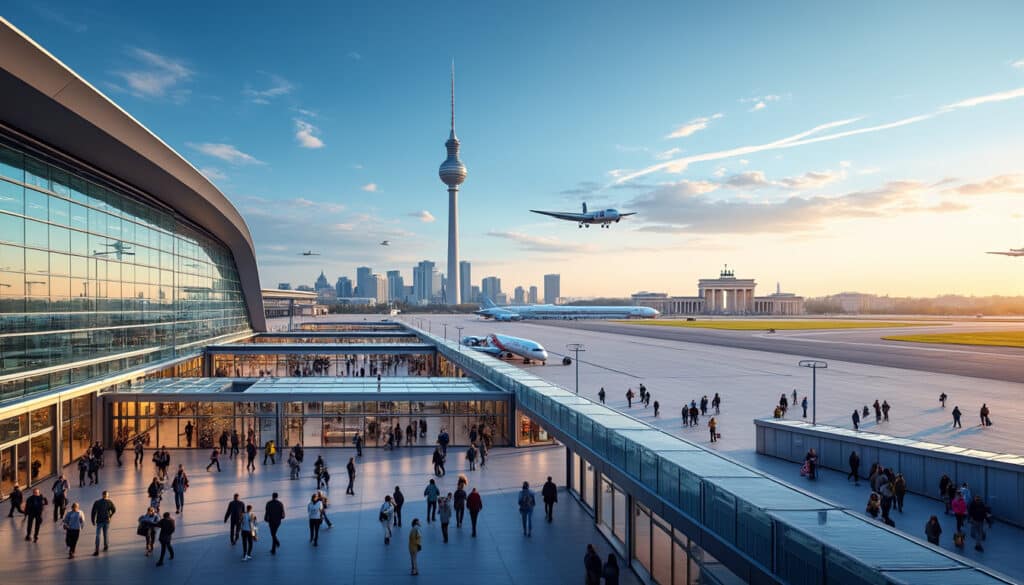
The bustling city of Berlin, recognized for its vibrant cultural scene and historical significance, is not only a hub of art, music, and politics but also a critical center for international travel. As Germany’s capital, it boasts well-structured aviation facilities…
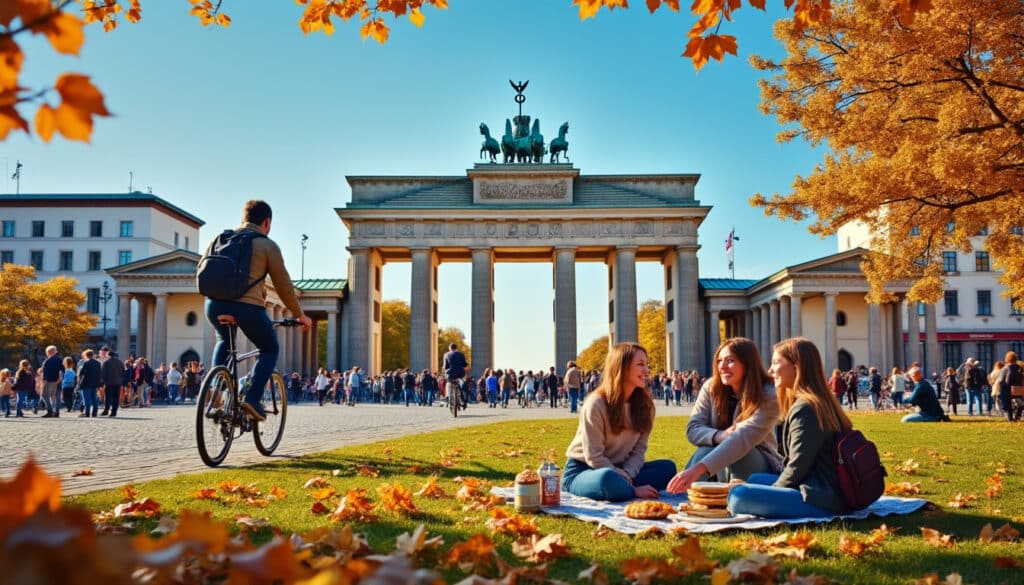
As one of Europe’s most buzzworthy destinations, Berlin boasts remarkable cultural diversity, vibrant nightlife, and a rich historical landscape. Yet, traveling to Berlin can be a significant expense, especially during peak tourist seasons. The shrewd traveler knows the importance of…
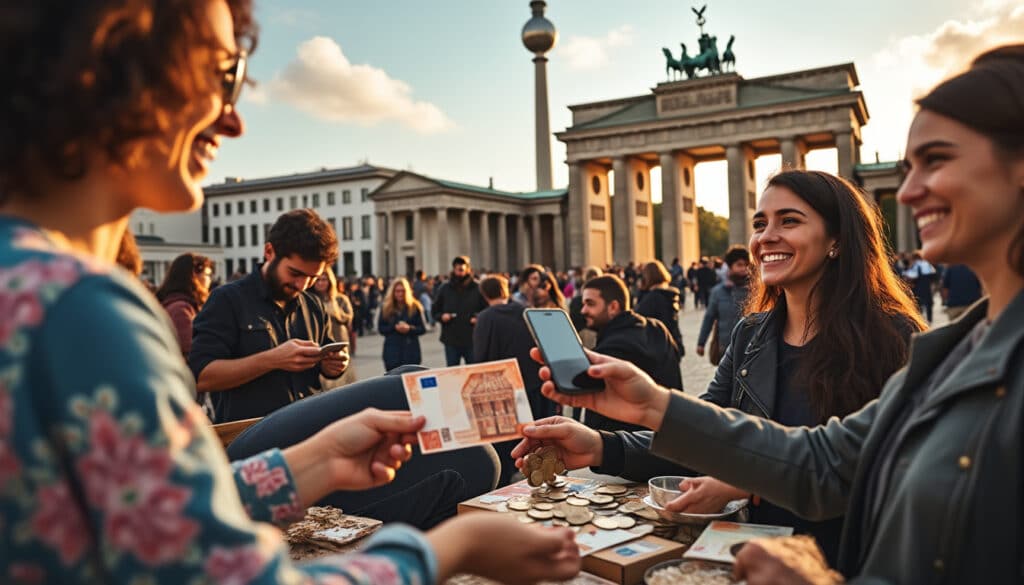
Currency and payments in Berlin
Berlin is a vibrant city bustling with diverse culture, history, and innovation. However, for travelers and newcomers, navigating its currency and payment systems can pose a few challenges. Understanding the nuances of using Euros, as well as cash and card…

Currency and tipping in Berlin
🌍 Berlin, a city where history and modernity intertwine, not only enchants with its pulsating urban landscape but also challenges visitors with its unique customs. Understanding currency and tipping norms here can significantly enhance your travel experience. In contrast to…
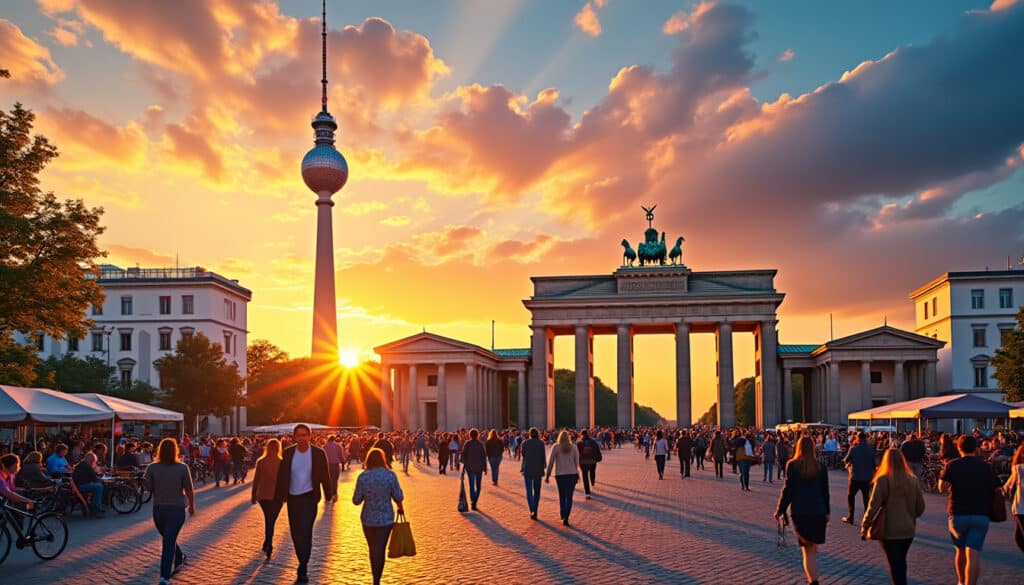
How many days to stay in Berlin?
✨ When planning a trip to Berlin, the bustling capital of Germany, discerning travelers often ponder over the ideal duration to thoroughly soak in its vibrant history, culture, and nightlife. With its eclectic mix of historical sites, modern architecture, and…
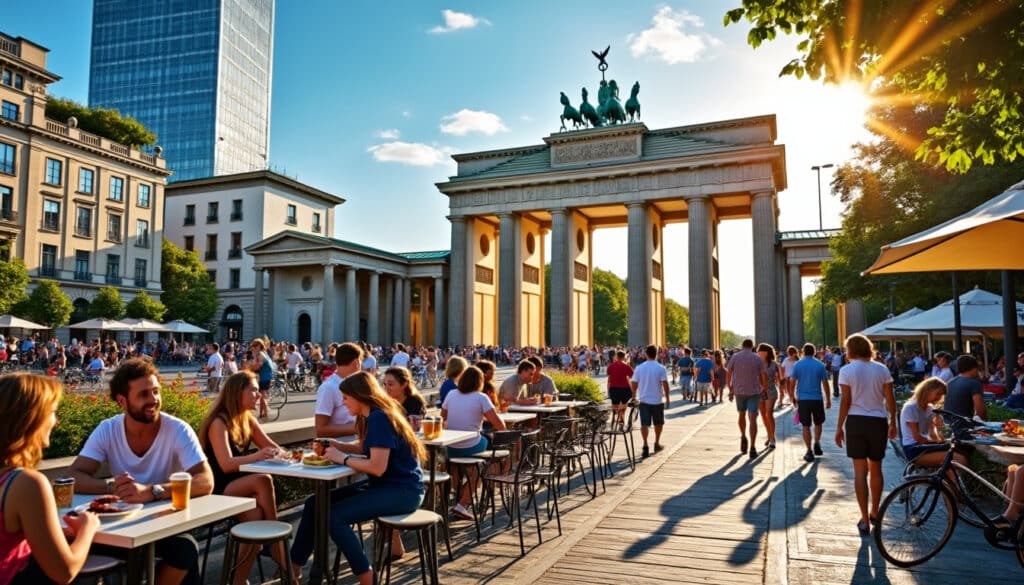
Berlin, the vibrant capital of Germany, entices travelers from all around the globe with its rich history, iconic landmarks, and buzzing cultural scene. However, one question often arises: Is Berlin expensive? For anyone planning a visit, understanding the costs associated…
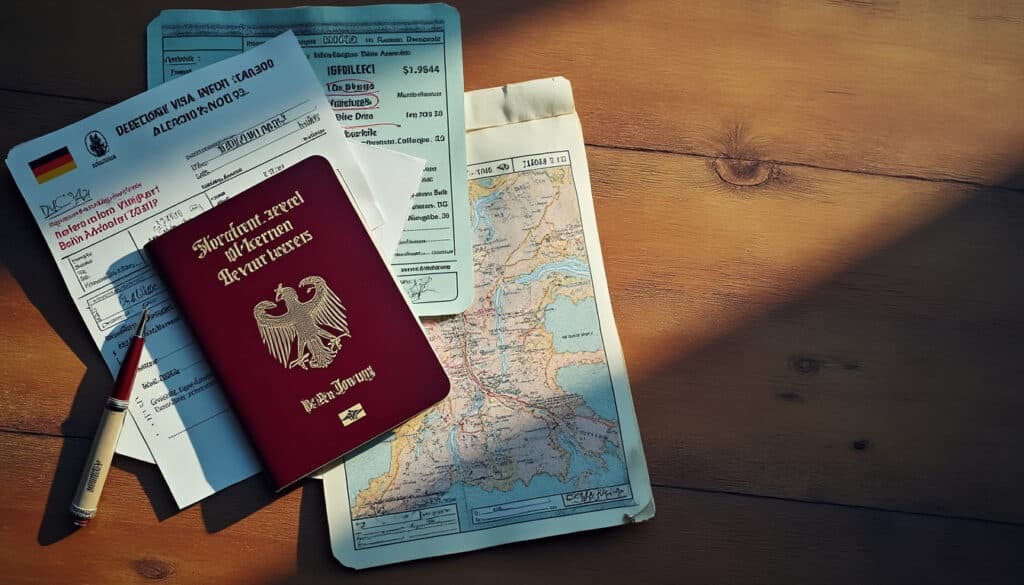
Passport and travel documents for Berlin
Traveling to Berlin is an adventure filled with rich history, vibrant culture, and energetic nightlife. However, before embarking on this journey, ensuring that all necessary travel documents are in order is essential. Navigating the requirements, particularly in a country known…

Berlin, a city where the echoes of history blend harmoniously with modernity, is a destination that promises more than just a glimpse into the past. Whether it’s the pulsating nightlife in thriving districts or serene strolls amidst architectural marvels, Berlin…

Public transport and payments in Berlin
Berlin’s public transportation system stands as a beacon of efficiency, quality, and connectivity, serving as one of the key pillars for seamless urban travel. Whether you are a resident or a visitor, understanding how this complex network operates is crucial…
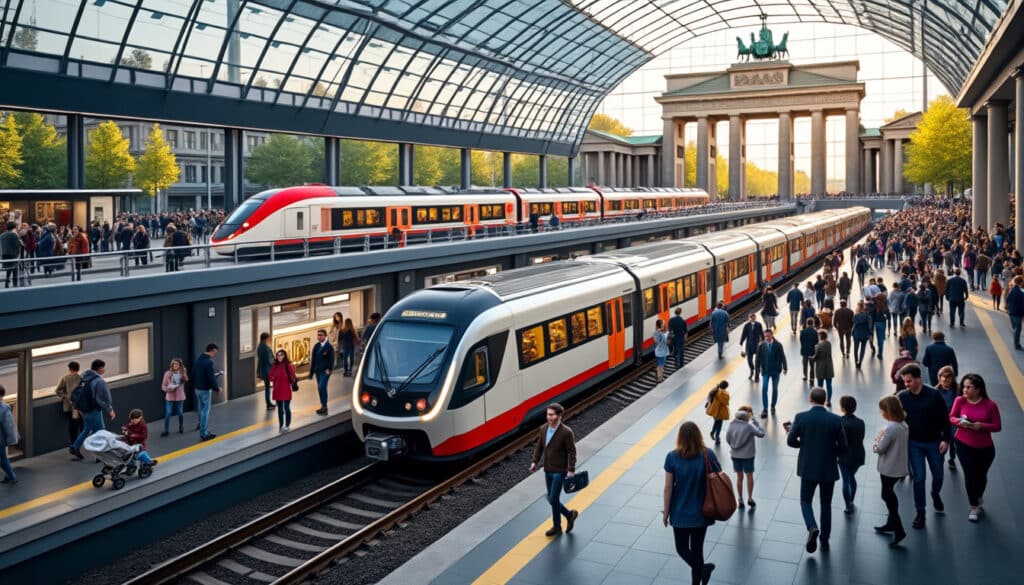
Berlin’s public transport system is renowned for its efficiency, robustness, and accessibility, making it one of the most user-friendly in Europe. Whether you are a resident or a visitor, navigating this sprawling German capital is seamless with its comprehensive network…

Shopping and delivery in Berlin
Berlin, with its vibrant allure and cosmopolitan charm, is not just the capital city of Germany; it is a bustling hub of shopping and delivery innovations. As 2025 unfolds, Berlin continues to embrace a range of shopping experiences, from traditional…

Berlin, the dynamic and vibrant heart of Germany, is a city that continuously redefines itself while never forgetting its tumultuous past. With its plethora of historical landmarks, modern art scenes, and buzzing nightlife, it captivates the hearts of travelers from…
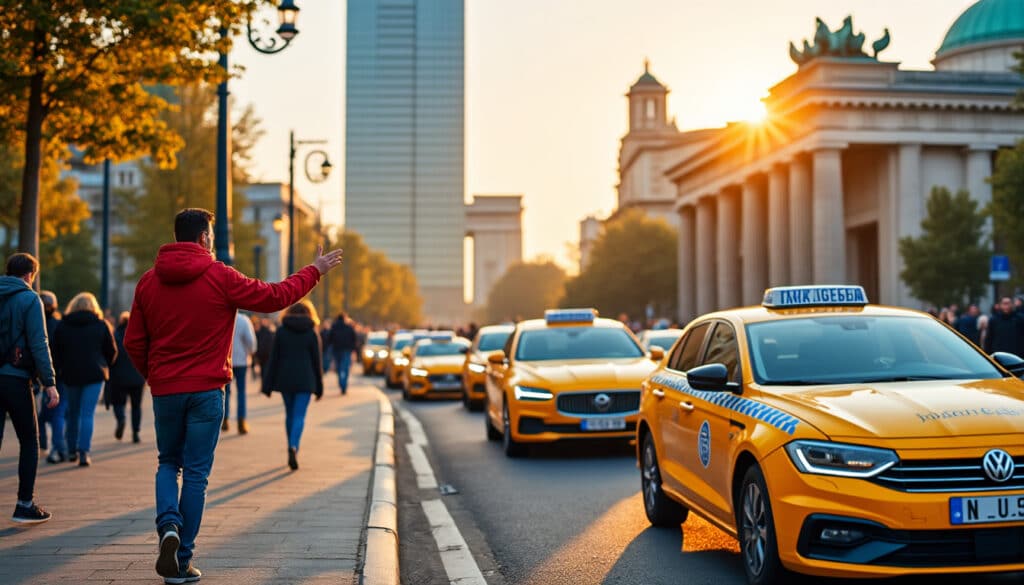
Taxi and cab services in Berlin
Berlin, a sprawling metropolis known for its vibrant culture and rich history, offers a multitude of transportation options for both residents and visitors. While the public transport system is highly praised for its efficiency, taxi and cab services provide an…

Tipping and local payment habits in Berlin
Berlin, a city of diverse experiences, offers an intricate tapestry of cultural practices and daily habits. One such area that can be both intriguing and perplexing for visitors is understanding the tipping etiquette and payment habits in this bustling metropolis.…

Train travel and stations in Berlin
Train travel in Berlin offers a unique blend of practicality and exploration, making it an indispensable component of both daily commutes and tourist itineraries. When navigating the bustling metropolis that is Berlin, understanding the intricate yet efficient network of train…

Planning a trip to Berlin promises an experience rich with history, vibrant culture, and eclectic neighborhoods begging to be explored. Known for its historical landmarks and spirited nightlife, Berlin invites travelers from around the world to dive into its urban…
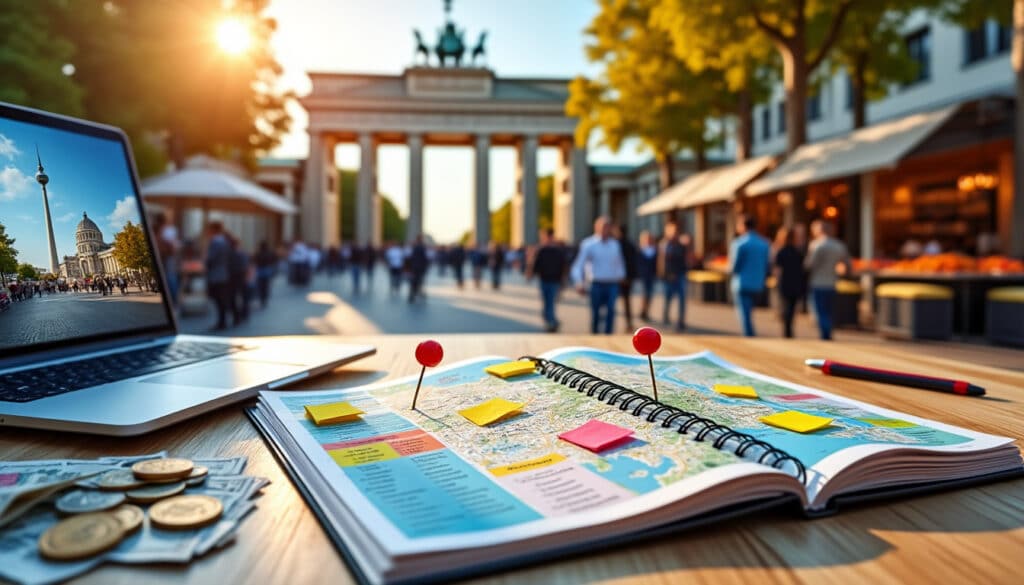
Trip costs and budgeting in Berlin
Berlin, renowned for its vibrant culture and historical sites, remains one of the most affordable capitals in Western Europe. This sprawling city offers a mix of world-class museums, diverse dining options, and pulsating nightlife all at reasonable prices, making it…
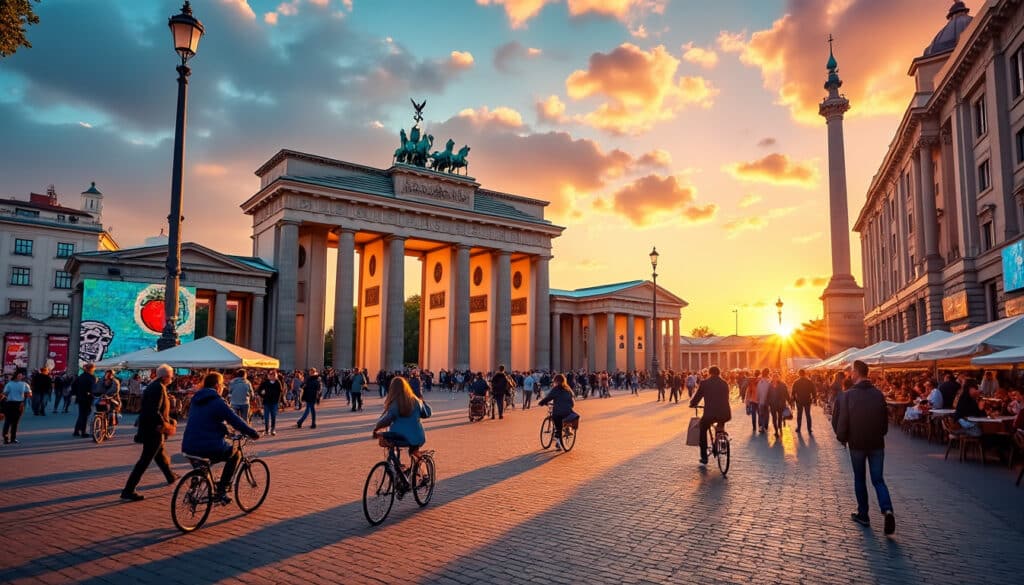
Berlin, a city teeming with rich history and vibrant energy, offers an enthralling experience for any traveler. From the iconic Brandenburg Gate to the eclectic neighborhoods, deciding how long to stay in Germany’s capital can be a challenging task. Whether…
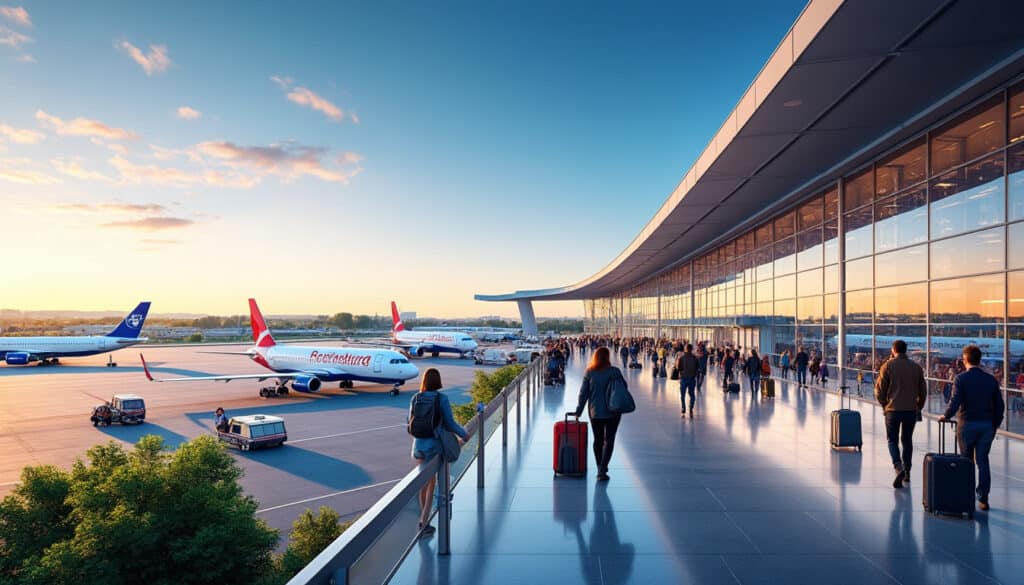
Berlin Brandenburg Airport (BER), named after the iconic German politician Willy Brandt, stands as a modern gateway to the vibrant capital of Germany. Situated in Schönefeld, just south of Berlin, the airport replaced the older Tempelhof, Schönefeld, and Tegel airports…
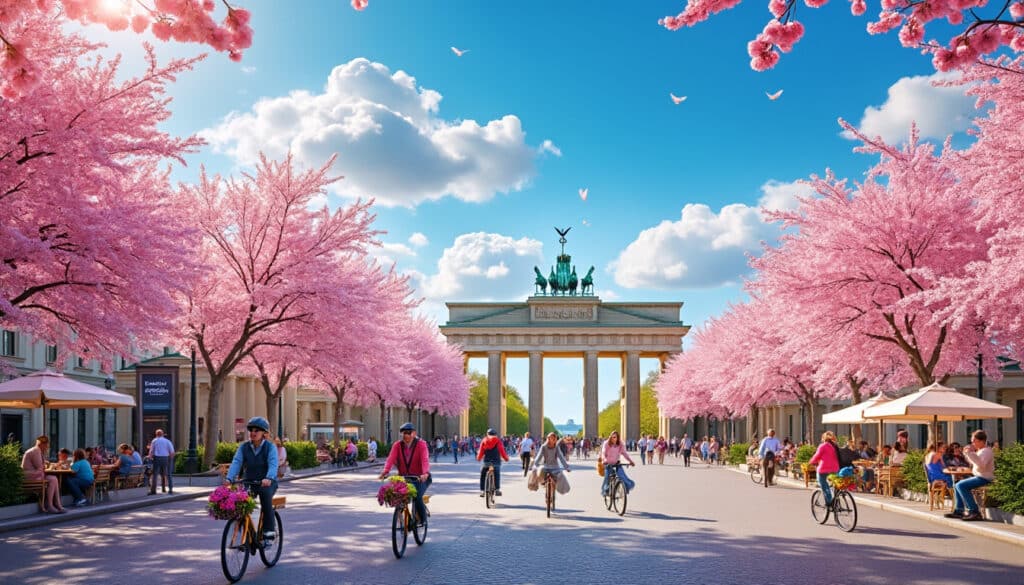
When is the best time to visit Berlin?
Berlin, a metropolis at the crossroads of history and modernity, offers an eclectic mix of cultural riches and vibrant festivities throughout the year. As a city that never truly sleeps, it attracts travelers globally. From exploring underground techno scenes to…
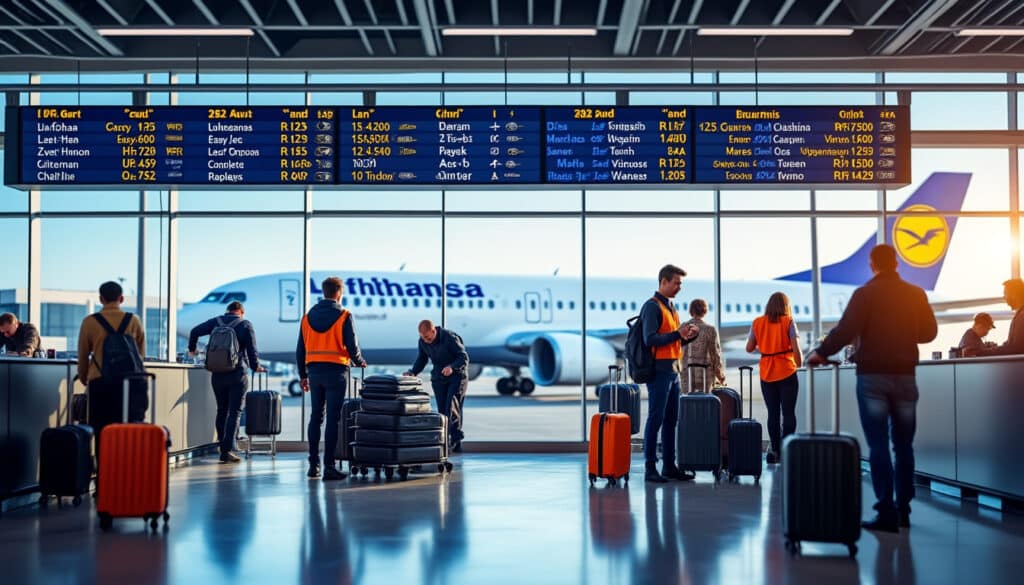
Flights to Berlin and airline options
In 2025, Berlin stands as a dynamic beacon of culture and innovation, attracting millions of visitors from around the globe. Whether you’re heading to the German capital for business, leisure, or its world-renowned techno scene, your journey begins with the…
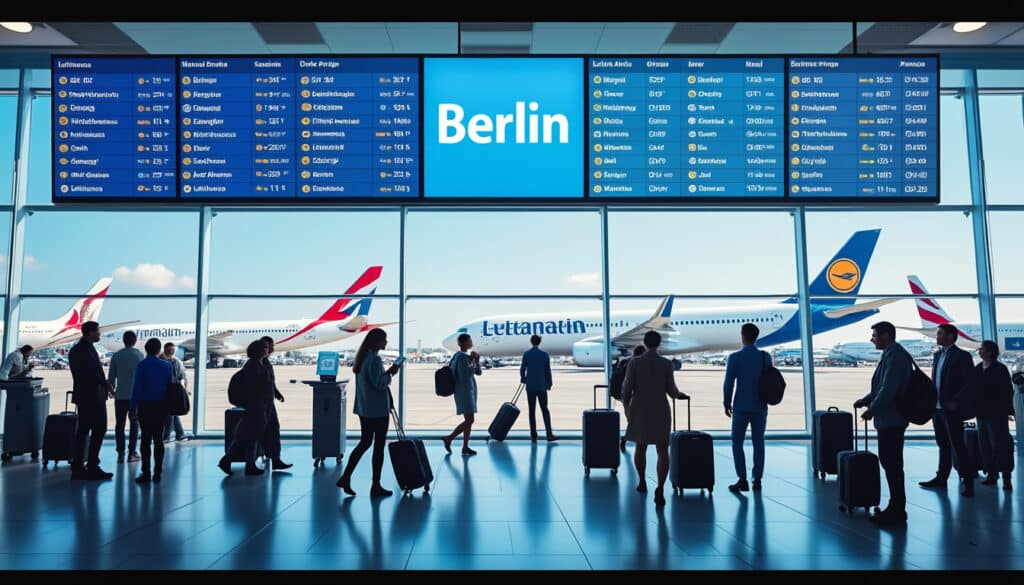
Flights to Berlin and airline options
Berlin, the vibrant capital of Germany, is not only a hub of political activity but also a cultural epicenter. As a city known for its rich history, diverse architecture, dynamic nightlife, and a flourishing arts scene, it’s no wonder that…

